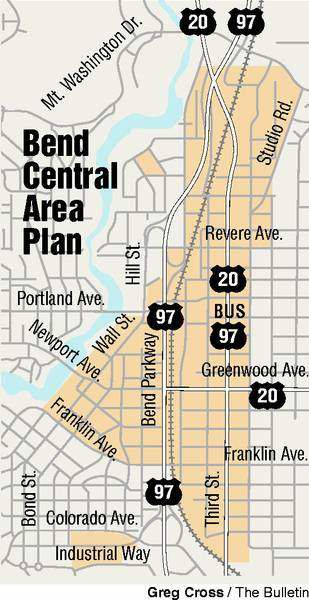With Bend’s budget tight, plan to beautify city takes a back seat
Published 5:00 am Sunday, April 27, 2008

- With Bend’s budget tight, plan to beautify city takes a back seat
Budget constraints have forced Bend to reorder its priorities, moving a major 30-year plan to beautify the city’s core lower on its to-do list.
During a recent Bend City Council meeting, city officials set the Central Area Plan as a secondary priority behind what they considered to be more urgent matters, such as restoring funding for street maintenance and public safety.
Trending
The Central Area Plan is going forward, but at a slower pace. The plan’s committee will continue to meet with city officials, and the city planning department will continue to devote some resources to the project. People working on the plan, though, have had to scale back their ambitions.
The City Council rejected the committee’s recent bid to spend about $500,000 in the coming fiscal year on consultants and an infrastructure study.
“Council did not really go for that,” said David Knitowski, the planner for the project.
Recent budget problems have caused Bend officials to make cuts across city government. The city expects to lay off 21 city employees in the next few months. It also temporarily froze hiring in the police and fire departments, though the city recently reversed that decision and decided to spend $406,000 more on the departments’ staffing.
“What this means is we’ll continue to monitor our financial situation,” said Eric King, the interim city manager. “If it looks like things are turning around, (we’d have) some direction on what we’d add back.”
When the city was flush with money from development dollars in 2004, the Central Area Plan was conceived as a way to spur growth around Bend’s downtown. The plan covers downtown, neighborhoods in the south, industrial parts of the north and a makeover of Third Street.
Trending
The entire plan covers 30 years of work, much of it undefined.
Changes would be made along Third, between Revere Avenue, on the north and the railroad crossing on the south. Bend Parkway and Fourth Street would set the east-west boundaries of the corridor. The heavy traffic currently on Third would eventually be rerouted along Second and Fourth streets.
Along Third Street, new buildings would be built closer to the street, with parking behind. There would be a center median with trees, and the area would become a pedestrian- friendly neighborhood akin to Bend’s downtown.
But rather than make changes along Third Street, the city could work on a development-by-development approach, said King. When new construction started, it would be required to meet the planned standards. That way, Third Street would slowly begin to look as planned.
That approach would at least help the proposed building codes take hold, and that way the Central Area Plan wouldn’t be “in a binder tossed in the corner,” said Robert Dempster, a committee member, who like some other committee members owns property along Third Street.
“I’m 76, so I’ll probably be dead before this comes to fruition, but that isn’t the point,” said Dempster. “But it is to make it a better city and make (Third Street) a beautiful part of it.”
The committee’s next chance to convince the City Council to move forward with the plan is on May 21, when it is scheduled to present a revised next step, down from the $500,000 last proposed. The council did not specify a certain amount during the meeting.
Even though the content of that step remains uncertain, King is optimistic that the overall plan will move forward.
The plan’s funding took a hit when the City Council decided not to put proceeds toward it from the sale of downtown land where The Bulletin used to be located at Olney Avenue and Wall Street. Part of the proceeds were to be spent on the plan, but that is no longer the case, according to Sonia Andrews, the city’s finance director.
King said he hopes to find an affordable way to continue the work.
Instead of that money, the city and its planners are trying to figure out a way to complete some of the work in-house rather than hiring outside consultants. For now, the planning priority for the city is to complete the urban growth boundary, said King. That could be handed off for county approval sometime in the fall if all goes well, said King, and free up time for the plan.
“We’re sort of limping along as best we can,” said King.








